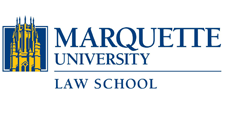Forthcoming 2019
Forthcoming 2019 is a section from the Everyday Evidence Legal Blog that highlights recent papers from attorneys and professors from across the legal spectrum. These recent and soon-to-be publications offer readers a chance to see a wide range of issues from different legal fields.
Today’s Forthcoming 2019 features:
How Circuits Can Fix Their Splits
(103 MARQ. L. REV. __ (2019) (forthcoming))
Abstract
From SSRN:
"Many assume that the best way to reform the federal courts is to reform the Supreme Court, offering dramatic proposals like modern-day calls for court packing. Attempts to address the problems caused by conflicts between the regional circuits of the federal courts of appeals, commonly known as “circuit splits,” have been no different. The desire to avoid circuit splits has had an immense influence on the structure and operation of the federal appellate courts for roughly a century, resulting in the Supreme Court having primary responsibility for resolving these conflicts. Yet as overall federal caseloads have increased, reliance on the Supreme Court alone to resolve conflicts has imposed serious and well-recognized burdens on the operation of the federal courts. For decades scholars have debated bold proposals to address these problems, such as creating a new national court dedicated to resolving conflicts or fundamentally restructuring the Supreme Court. This Article offers a straightforward yet transformational proposal overlooked in these debates: let the courts of appeals resolve their conflicts on their own.
This Article argues that the federal courts of appeals should resolve circuit splits on their own, rather than rely on the Supreme Court, and lays out how they could do so. A judge-made doctrine known as the “law of the circuit” prohibits a later panel of a court of appeals from revisiting an earlier panel’s decision, even when the earlier decision has resulted in a conflict with another circuit. Because practically all work in the courts of appeals is done by three-judge panels, the law of the circuit doctrine has the effect of locking conflicts in place—the first circuit to address an issue cannot confront the reasons that motivated a latter circuit to come to a different conclusion. Instead, every circuit gets one chance to weigh in and, as a practical matter, no circuit can ever resolve the conflict.
I therefore propose relaxing the law of the circuit doctrine when a circuit’s prior decision has resulted in a conflict with another circuit. This proposal is narrowly tailored, identifying tools already in use in some courts of appeals that would allow them to relax the doctrine and revisit a prior decision, but only where that prior decision has subsequently resulted in a conflict with another circuit. This creates the opportunity to address the conflict without Supreme Court intervention while maintaining the existing doctrine’s benefits in the vast majority of the court of appeals’ cases. Yet the proposal is also transformational, fundamentally changing the relationship between the federal appellate courts by empowering the courts of appeals to engage in dialogue with each other and reducing reliance on the Supreme Court. This Article therefore offers a realistic proposal for achieving important structural and institutional improvements in the federal courts at a lower cost and with less disruption than existing proposals.
Sassman's article can be found here. ( Sassman, Wyatt, How Circuits Can Fix Their Splits (September 29, 2019). Marquette Law Review, Vol. 103, 2019 (forthcoming). Available at SSRN: https://ssrn.com/abstract= )
.png)
